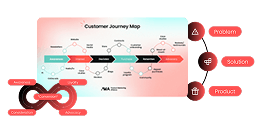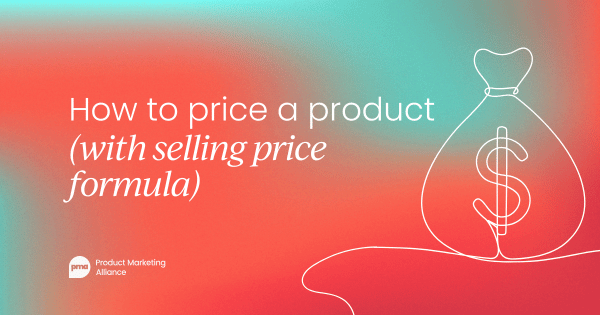Pricing is one of the most strategic topics within an organization, and at the same time, one of the most challenging for product marketing professionals. It's certainly not trivial for someone in a PMM role to tackle pricing and packaging, especially when you factor in the company’s structure, market segment, and product maturity.
Although we’re not always the final decision-makers (spoiler alert for what’s coming), our role in the process can be crucial to ensure value clarity, market alignment, and support for an effective product strategy.
This article offers a practical perspective on the importance of alignment between product marketing and pricing, based on my experience in mostly B2B environments.
Who owns pricing?
In my view, pricing doesn’t have a single owner within an organization. While final pricing decisions are often centralized in revenue operations, finance, or even growth teams, it’s critical that product marketing not only takes part in the process but also acts as a bridge between the value the product delivers and how customers perceive that value.
When pricing has just one owner, there’s a tendency to:
- View pricing as disconnected from the product
- Ignore the user’s perspective – and the value generated for them
- Base decisions only on financial metrics like margins, profits, and break-even points
This often leads to a short-term revenue mindset, focusing only on acquiring new seats or expanding the user base.
But we shouldn’t think of pricing this way alone. Good pricing decisions also help scale LTV (lifetime value) and generate revenue over time. We need to retain and expand customers by helping them evolve within the product.
To me, pricing decisions should involve not only finance/FP&A teams but also marketing/growth, sales, product, and product marketing. No single team should “own” pricing – it’s one of the most cross-functional topics in the company.
The truth is, everyone talks about pricing, but very few companies have someone truly focused on it as a core part of their job.
The role of product marketing in pricing decisions
As PMMs, we’re responsible for positioning the product, communicating its value proposition, and understanding market needs and pain points. Together with product, we’re among the few who deeply understand the user and the value they extract from our solution.
We also have a strong grasp of market intelligence and competitive positioning, which helps us connect the offered price to the value delivered.
All of this directly impacts what customers are willing to pay and, therefore, should influence how pricing models are built.
In practice, the relationship between product marketing and pricing can be tense, misaligned, and at times frustrating. I’ve faced pricing decisions made with little or no market input, A/B tests run with the wrong users, or plan changes implemented without analyzing value perception.
It’s a love-hate relationship: we want to be involved, we know we can contribute, but we’re not always given the space or structure to do so.
How and where PMM can add value to the pricing process
Defining the right packaging – and especially the right price– is an art. Price too high, and you’re out of the competitive game. Price too low, and you’re undervaluing your product.
As the voice of the product, I believe PMMs must master:
- Market dynamics
- The financial logic behind the product
- The customer’s needs, in order to craft more effective pricing strategies.
Also, B2B pricing is quite different from B2C. B2B is usually ROI- or ROB-driven per user, while B2C varies based on the product model (productivity, attention, or transaction). So it’s essential to understand which type of product you’re working with.
I’ve worked directly with packaging & pricing and created a strategic flow – almost like a framework – to guide my pricing and packaging decisions. This structure helped me build a more assertive, data-backed rationale covering all the key elements. Let's take a look.
6 essential pieces in the pricing and packaging puzzle

1. Business objective behind pricing
A pricing project may be triggered by several factors:
- Product: Launching a new product or feature (especially if it changes how your product is experienced or monetized).
- Market: A shifting competitive landscape (M&A, new entrants, trends).
- Audience: Expanding to a new region or customer segment.
- Business: Strategic pivots, tech adoption, or regulatory changes.
Never assume – ask and align. What is the company trying to achieve with this pricing review? More revenue? Product adoption? Increased user base? Your pricing approach should vary accordingly.
2. Product costs: Your baseline
There are two types of costs to consider:
- Acquisition cost: The cost of acquiring new users and revenue.
- Service cost: The cost of delivering the product (support, tools, salaries, etc.).
Understand the financial logic behind your product. Ask yourself:
- What’s the lowest price I can charge and still maintain a healthy margin?
- What’s the highest price I can charge while still delivering fair value?
PMMs don’t need to master the math – lean on finance to help you interpret the product’s P&L (profit and loss). But always keep in mind: pricing below your business cost will erode margins and threaten sustainability.
3. Market and competitive analysis
Map your key competitors in the same category (including substitutes) and analyze:
- Their positioning
- Packaging models (plans, bundles, single SKUs)
- Pricing
- Value-added services
- Pricing model and frequency
- Promo frequency
- High-ticket vs. low-ticket approach
- Market segments and target audience
- Competitive differentiators
4. Buying personas and customer segments
Each persona may have different JTBDs (job to be done), pain points, and use cases – and each of these influences price sensitivity and willingness to pay (WTP).
Use a mix of methods to define segments:
- Internal data: Sales and usage patterns, feature adoption, and spend.
- Market analysis: Online behavior and engagement trends.
- User research: Qualitative and quantitative interviews to uncover motivations, objections, preferences, and demographics.
Also, bring in insights from sales and CX teams to enrich your segmentation.
Avoid overly narrow or overly broad targeting. Ask yourself:
- How many user segments/profiles and use cases did my product have?
- How did each of these segments interact with my product? Which features were most or least valued by them?
If you're looking at a new product entering the market, be cautious not to segment too broadly or too narrowly. A very niche audience might make it harder for the product to scale and reduce economies of scale, which can increase costs.
On the other hand, a broad, one-size-fits-all approach might lead you to miss specific pain points of any particular user segment, which also prevents connection and scalability. So pay attention here!
Ask yourself questions like:
- Will the most valued features be available at product launch?
- Can these available features be split across different plans? Does that make sense for the product?
- Can we reach the identified segments with our current marketing channels? Or will we need to test a new channel?
- How strong is the hypothesis we’ve built about our segments?
The more conviction you have about which segments you’re targeting and how the product can be packaged for each of them, the stronger your go-to-market will be – and the greater your chances of high product performance.
5. Willingness to pay and customer perception
One of the most crucial questions is: how much is each user segment willing to pay?
Different segments will likely have different WTP ranges, so test price elasticity. This helps forecast the impact of price changes on revenue and customer behavior.
WTP is also influenced by:
- Perceived value: Users may have a higher willingness to pay if they perceive that the product offers brand prestige, exceptional quality, convenience, or truly delivers high value for their pain points.
- Reference prices: Existing products in the market set expectations. The prices of similar products in this category – or historical prices – create a reference point in the user’s mind. Users tend to use this reference price as a benchmark whenever they’re evaluating other products in the same category.
- Price = quality bias: Users may associate a high price with high quality, especially in contexts with limited information.
- Scarcity and exclusivity: The scarcity of a product can increase users’ willingness to pay, as they may perceive scarce products as having greater value.
Research methods include:
- Van Westendorp: My favorite – offers a range of acceptable prices and ideal pricing insights.
- Conjoint analysis: Measures the value customers place on specific features.
- Market Experiments: A/B tests with different pricing across segments.
6. Value metric
This concept is key.
What’s the core value your user gets from your product?
That value should guide your pricing. The more the user benefits from the product, the more willing they’ll be to pay.
Common types of value metrics:
- Feature differentiated: Pricing based on features chosen (e.g., iPhone model).
- Usage-based: Pricing grows with usage volume (e.g., number of conversations/month).
- Outcome-based: Pricing scales with results (e.g., HubSpot pricing by contact list size).
The goal is to tie pricing directly to the user’s value extraction; the more they grow, the more value they see, and the more they’ll pay.
Always test and monitor
Testing is critical to validate or refine your pricing strategy. Collaborate with data, marketing, and product teams to run A/B or multivariate tests on landing pages or campaigns to see what packaging, price points, or offers perform best by segment.
Once hypotheses are validated, roll out and monitor. Don’t rely only on top-line metrics like average ticket, CAC, or LTV/CAC.
Use BI tools to identify pricing trends, correlate changes with sales, and track KPIs over time.
Failing to identify – or react to – poor pricing fast enough can harm sustainability, product scalability, and customer trust.
Final thoughts
For me, the hardest part is not designing the pricing model or applying the research frameworks – it’s convincing leadership that a product pricing review is needed, or that we need more time and resources to do it properly. 🫠
Pricing is more than numbers – it’s a direct translation of the product’s value proposition. And when product marketing is left out of the conversation, you miss the opportunity to align price, narrative, and delivered value.
That’s why triangulating product vision, business logic, market landscape, and user perception is not just helpful; it’s essential to defend your idea and ensure that product marketing actively participates, generating value in this process.
If this relationship seems challenging, it’s because it truly is. But that’s precisely where the opportunity lies: being the link between strategy, positioning, and value perception can be the differentiator that solidifies product marketing’s role as a strategic function within the company.


















 Follow us on LinkedIn
Follow us on LinkedIn




.svg)
Start the conversation
Become a member of Product Marketing Alliance to start commenting.
Sign up now